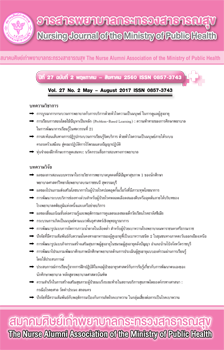กระบวนการเกิดเป็นมนุษย์ตามแนวพันธุศาสตร์เชิงพุทธบูรณาการ*
Main Article Content
Abstract
การวิจัยนี้ เป็นการวิจัยแบบผสมผสาน ประกอบด้วยการวิจัยภาคเอกสารและการวิจัยเชิงคุณภาพมีวัตถุประสงค์เพื่อเสนอรูปแบบกระบวนการเกิดเป็นมนุษย์ตามแนวพันธุศาสตร์เชิงพุทธบูรณาการ ค้นคว้าข้อมูลด้านเอกสารในพระไตรปิฎก คัมภีร์อรรถกถา ฎีกา หนังสือ เอกสาร รวมทั้งงานวิจัยที่เกี่ยวข้องต่างๆ ทั้งทางด้านพุทธศาสตร์และด้านพันธุศาสตร์ ร่วมกับการสัมภาษณ์เชิงลึกจากผู้เชี่ยวชาญทั้ง 2 ด้าน จำนวน 10 ท่าน วิเคราะห์ข้อมูลด้วยวิธีวิเคราะห์เชิงเนื้อหาแล้วนำมาบูรณาการสังเคราะห์เป็นองค์ความรู้ใหม่
ผลการวิจัย พบว่า ชีวิตมนุษย์เกิดจากมูลเหตุ 2 ประการ คือ ประการแรกเป็นมูลเหตุหลัก ได้แก่เจตนากรรมในกุศลกรรมบถ 10 ในอดีตชาติของสัตว์ที่จะมาเกิดเป็นปัจจัยแก่ปฏิสนธิวิญญาณและกัมมชรูป มีองค์ประกอบของขันธ์ 5 ครบถ้วนเกิดเป็นชีวิตใหม่ขึ้นมา ประการที่สองเป็นมูลเหตุรอง ได้แก่ เจตนาของพ่อและแม่ที่ต้องการจะสืบเผ่าพันธุ์ เป็นปัจจัยให้สร้างสารพันธุกรรมหรือยีนขึ้นมาในไข่ที่ได้รับการผสมเชื้อ (ไซโกต) เพื่อรองรับชีวิตใหม่ตามสมควรแก่ปฏิสนธิวิญญาณและกัมมชรูปนั้นๆ และพร้อมจะแสดงลักษณะเด่นแรกทางพันธุกรรมของมนุษย์ เมื่อมีปฏิสนธิวิญญาณและกัมมชรูป (กลลรูป) ไปปรากฏขึ้น ปฏิสนธิวิญญาณ กัมมชรูป และยีน ทั้ง 3 ส่วนนี้มีการทำงานที่สัมพันธ์กัน ทั้งนี้เพราะชีวิตมนุษย์ต้องมีส่วนประกอบที่เป็นนามธรรม คือ ส่วนที่ทำหน้าที่รับรู้ ได้แก่ ปฏิสนธิวิญญาณ ส่วนที่เป็นรูปธรรม คือ ส่วนวัตถุธาตุ ทางกายภาพ ได้แก่ กัมมชรูป และส่วนที่ทำหน้าที่แสดงภาพสะท้อนการปรากฏขึ้นของส่วนที่เป็นนามธรรมและรูปธรรม เพื่อแสดงความเป็นรูปเป็นร่างและความเป็นไปของพฤติกรรมในชีวิตมนุษย์ให้เห็น และรับรู้ได้ว่ามีความแตกต่างจากสัตว์ชนิดอื่น ได้แก่ ยีนและดีเอนเอ
The Process of Being Born to Be Human-Beings According to the
Genetics Integrated with Buddhism*
Sukanda Klinthuesin**
Abstract
This study includes both documentary research and qualitative research designs. The objective is to propose the process of being born to be human-beings according to the genetics integrated with Buddhism model by collecting data from literature review, ipitaka, commentary, sub-commentary, textbooks, and related documents and research works both in the areas of Buddhism and genetics. In this research, an in-depth interview of 10 experts was also conducted, followed by content analysis and synthesis of those data to make the new body of knowledge.
The results showed that being born to be a human being is caused by two factors. The first factor was the major cause. It was karma intention in tenfold ways of good action in the past life of the creature, who would come to be born, which created the condition of the “Rebirth-Consciousness” (Patisonthiwinyana) and the “Karma Created Form” (Kammacharupa). These conditions were combined and formed into “Five Aggregates” for being born as the new life. The other factor was the minor cause. It referred to the intention of parents who really needed reproduction that became the factor in creating the gene in the ovum which has been mixed for carrying the new life according to “Rebirth-Consciousness” and the “Karma Created Form”. By virtue of those causes, the character of the human being comes into existence. When the “Rebirth-Consciousness and the Karma Created Form” (Kalalarupa) come to exist, then all three parts, namely, the “Rebirth-Consciousness”, “Karma Created Form” and the “Gene”, were correlated with each other. Consequently, a human being must possess the abstract components functioning as the “Rebirth-Consciousness” and the concrete parts which were the part of the bodily element such as the “Karma Created Form”. Also, Gene and DNA are the last components which reveal the reflection of occurrence of the abstract parts and concrete parts in order to show the formation and performance of his/her behavior in different aspects from other creatures.
*Dissertation, Doctor of Philosophy (Buddhist Studies), Mahachulalongkornrajavidyalaya University
**Rajavithi Hospital, Department of Medical Services
Article Details
บทความและรายงานวิจัยในวารสารพยาบาลกระทรวงสาธารณสุข เป็นความคิดเห็นของ ผู้เขียน มิใช่ของคณะผู้จัดทำ และมิใช่ความรับผิดชอบของสมาคมศิษย์เก่าพยาบาลกระทรวงสาธารณสุข ซึ่งสามารถนำไปอ้างอิงได้
